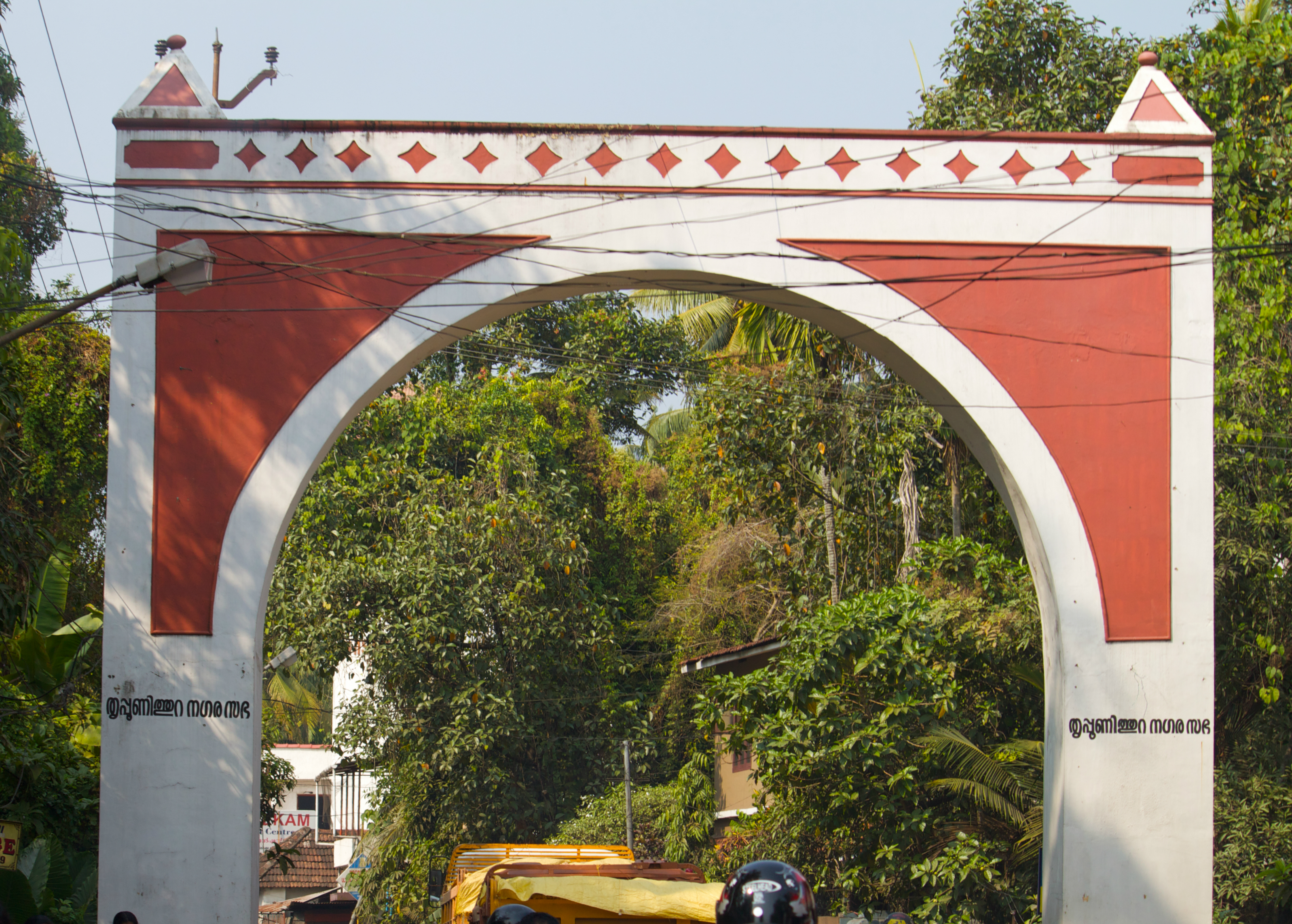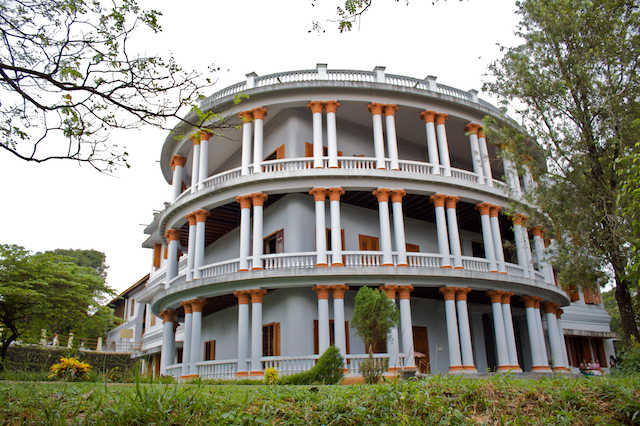|
Thrippunithura
Thrippunithura or Tripunithura (), is a prominent historical and residential region in the City of Kochi in Kerala, India. Located about 7 km (4 mi) from the city centre, Tripunithura was the capital of the erstwhile Kingdom of Cochin. The descendants of the Cochin royal family still live in the palaces here. The Hill Palace situated in Tripunithura was the palace of Maharaja of Cochin, the ruler of Kingdom of Cochin. Tripunithura is also well known for its historical cultures and worldwide famous because of Sree Poornathrayeesa Temple and the annual festival ''Vrishchikoltsawam'' that takes place at the temple. In local administration, it is a municipality named Tripunithura Municipality. In the state administrative structure, Tripunithura is part of the Ernakulam District in the state of Kerala. Etymology Some latter day Sanskrit enthusiasts describe the origin of the name to "pūrṇa vēda puri" — the town of Vedas in its entirety. Another possible origi ... [...More Info...] [...Related Items...] OR: [Wikipedia] [Google] [Baidu] |
Sree Poornathrayeesa Temple
Sree Poornathrayesa temple (in Malayalam: ) is a Hindu temple situated in Tripunithura, Kochi, the capital of the former Kingdom of Cochin, Kerala, India. The temple is considered among the greatest temples in Kerala and was the first among eight royal temples of the erstwhile Kochi Kingdom. The deity was also considered the national deity of Cochin and protector guardian of Tripunithura. The deity in this temple is Lord Vishnu, who is in the form of ''Santhanagopala Murthy''. Lord Poornathrayeesa is known for his love of elephants. Hence more than 40 elephants participate in his ''Vrishchikotsavam''. And most of the elephants are sent for the (festival) without a money return expected by the elephant owners as Poornathrayeesa is considered to be an elephant lover. The temple is famous for its yearly or festivals. The main one is the , [...More Info...] [...Related Items...] OR: [Wikipedia] [Google] [Baidu] |
Tripunithura
Thrippunithura or Tripunithura (), is a prominent historical and residential region in the City of Kochi in Kerala, India. Located about 7 km (4 mi) from the city centre, Tripunithura was the capital of the erstwhile Kingdom of Cochin. The descendants of the Cochin royal family still live in the palaces here. The Hill Palace situated in Tripunithura was the palace of Maharaja of Cochin, the ruler of Kingdom of Cochin. Tripunithura is also well known for its historical cultures and worldwide famous because of Sree Poornathrayeesa Temple and the annual festival ''Vrishchikoltsawam'' that takes place at the temple. In local administration, it is a municipality named Tripunithura Municipality. In the state administrative structure, Tripunithura is part of the Ernakulam District in the state of Kerala. Etymology Some latter day Sanskrit enthusiasts describe the origin of the name to "pūrṇa vēda puri" — the town of Vedas in its entirety. Another possible origi ... [...More Info...] [...Related Items...] OR: [Wikipedia] [Google] [Baidu] |
Cochin Royal Family
The Kingdom of Cochin, named after its capital in the city of Kochi (Cochin), was a kingdom in the central part of present-day Kerala state. It commenced at the early part of the 12th century and continued to rule until 1949, when monarchy was abolished by the dominion of India. Historically, the capital of Cochin was in Kodungallur (Cranganore), but in 1341 the capital was moved to Cochin inorder to remedy a disastrous flood. By the early 15th century, Cochin lost its ability to fully defend itself. By the late 15th century, the Cochin kingdom shrank to its minimal extent as a result of invasions by the Zamorin of Calicut. When Portuguese armadas arrived in India, the Kingdom of Cochin had lost its vassals to the Zamorins, including Edapalli and Cranganore, the later of which had even been at the centre of the kingdom historically. Cochin was looking for an opportunity to preserve its independence, which was at risk. King Unni Goda Varma warmly welcomed Pedro Álvares Cabra ... [...More Info...] [...Related Items...] OR: [Wikipedia] [Google] [Baidu] |
Kingdom Of Cochin
The Kingdom of Cochin, named after its capital in the city of Kochi (Cochin), was a kingdom in the central part of present-day Kerala state. It commenced at the early part of the 12th century and continued to rule until 1949, when monarchy was abolished by the dominion of India. Historically, the capital of Cochin was in Kodungallur (Cranganore), but in 1341 the capital was moved to Cochin inorder to remedy a disastrous flood. By the early 15th century, Cochin lost its ability to fully defend itself. By the late 15th century, the Cochin kingdom shrank to its minimal extent as a result of invasions by the Zamorin of Calicut. When Portuguese armadas arrived in India, the Kingdom of Cochin had lost its vassals to the Zamorins, including Edapalli and Cranganore, the later of which had even been at the centre of the kingdom historically. Cochin was looking for an opportunity to preserve its independence, which was at risk. King Unni Goda Varma warmly welcomed Pedro Álvares Cabra ... [...More Info...] [...Related Items...] OR: [Wikipedia] [Google] [Baidu] |
Hill Palace, Tripunithura
Hill Palace is an archaeological museum and palace located in the Tripunithura neighbourhood of Kochi city in the Indian state of Kerala. It is the largest archeological museum in the state and was the imperial administrative office and official residence of the Cochin Maharaja. Built in 1865, the palace complex consists of 49 buildings in the traditional architectural style, spreading across . The complex has an archaeological museum, a heritage museum, a deer park, a pre-historic park and a children's park. The campus of the museum is home to several rare species of medicinal plants. Presently the palace has been converted into a museum by The Kerala State Archaeology Department and is open to public. The palace is about from the city centre and is reachable by road and rail. The Centre for Heritage Studies (CHS), an autonomous research and training institute set up by the Department of Cultural Affairs, Government of Kerala also functions at the site. CHS is designated a ... [...More Info...] [...Related Items...] OR: [Wikipedia] [Google] [Baidu] |
Sanskrit
Sanskrit (; attributively , ; nominally , , ) is a classical language belonging to the Indo-Aryan branch of the Indo-European languages. It arose in South Asia after its predecessor languages had diffused there from the northwest in the late Bronze Age. Sanskrit is the sacred language of Hinduism, the language of classical Hindu philosophy, and of historical texts of Buddhism and Jainism. It was a link language in ancient and medieval South Asia, and upon transmission of Hindu and Buddhist culture to Southeast Asia, East Asia and Central Asia in the early medieval era, it became a language of religion and high culture, and of the political elites in some of these regions. As a result, Sanskrit had a lasting impact on the languages of South Asia, Southeast Asia and East Asia, especially in their formal and learned vocabularies. Sanskrit generally connotes several Old Indo-Aryan language varieties. The most archaic of these is the Vedic Sanskrit found in the Rig Veda, a colle ... [...More Info...] [...Related Items...] OR: [Wikipedia] [Google] [Baidu] |
Pooja Cricket Tournament TPTRA 2009
Puja or Pooja may refer to: Religion *Puja (Hinduism), a ritual to host, honor or of devotional worship, or one to celebrate an event *Puja (Buddhism), expressions of honour, worship and devotional attention * Puja, a wooden stick, sometimes leather-covered, used to play a singing bowl People *Pooja Banerjee (born 1991), Indian television actress *Pooja Bhatt (born 1972), Bollywood producer, director and actress * Pooja Bose, Indian television actress *Pooja Gandhi, Indian film actress *Pooja Hegde, Indian actress *Pooja Pal (alternate spelling Puja Pal), Indian politician from the Bahujan Samaj Party *Pooja Singh, Indian television actress *Pooja Umashankar, Indian actress *Puja Gupta, winner of Miss India Universe in 2007 *Frigyes Puja (1921–2008), native form Puja Frigyes, Hungarian politician *Miss Pooja, (born 1980) (real name Gurinder Kaur Kainth), Indian singer Other uses *Puja, Nepal, a town in the Rapti Zone of central south-western Nepal *Pooja Naberrie The Skywal ... [...More Info...] [...Related Items...] OR: [Wikipedia] [Google] [Baidu] |
Vedas
upright=1.2, The Vedas are ancient Sanskrit texts of Hinduism. Above: A page from the '' Atharvaveda''. The Vedas (, , ) are a large body of religious texts originating in ancient India. Composed in Vedic Sanskrit, the texts constitute the oldest layer of Sanskrit literature and the oldest scriptures of Hinduism. There are four Vedas: the Rigveda, the Yajurveda, the Samaveda and the Atharvaveda. Each Veda has four subdivisions – the Samhitas (mantras and benedictions), the Aranyakas (text on rituals, ceremonies, sacrifices and symbolic-sacrifices), the Brahmanas (commentaries on rituals, ceremonies and sacrifices), and the Upanishads (texts discussing meditation, philosophy and spiritual knowledge).Gavin Flood (1996), ''An Introduction to Hinduism'', Cambridge University Press, , pp. 35–39A Bhattacharya (2006), ''Hindu Dharma: Introduction to Scriptures and Theology'', , pp. 8–14; George M. Williams (2003), Handbook of Hindu Mythology, Oxford University Press, , p ... [...More Info...] [...Related Items...] OR: [Wikipedia] [Google] [Baidu] |
Quiver
A quiver is a container for holding arrows, bolts, ammo, projectiles, darts, or javelins. It can be carried on an archer's body, the bow, or the ground, depending on the type of shooting and the archer's personal preference. Quivers were traditionally made of leather, wood, furs, and other natural materials, but are now often made of metal or plastic. Etymology The English word quiver has its origins in Old French, written as quivre, cuevre or coivre. Types Belt quiver The most common style of quiver is a flat or cylindrical container suspended from the belt. They are found across many cultures from North America to China. Many variations of this type exist, such as being canted forwards or backwards, and being carried on the dominant hand side, off-hand side, or the small of the back. Some variants enclose almost the entire arrow, while minimalist "pocket quivers" consist of little more than a small stiff pouch that only covers the first few inches. The Bayeux Tapestry ... [...More Info...] [...Related Items...] OR: [Wikipedia] [Google] [Baidu] |






